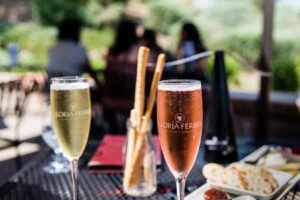As much of the world attempts to incorporate more sustainable methods into their production processes, you may wonder what your options are when it comes to drinking organic wine (or beer). Can you tell from a wine label whether it is truly organic?
There are only two farms noted as the first growers to be certified organic, which was based on an inspection of their raw materials, production methods and records by the California Department of Health Services. Only a handful of other wineries have since become certified processors of organic wines.
There are four levels of organic that winemakers can claim to help consumers know what they are really drinking (definitions from USDA guidelines):
- 100% Organic. Wines claiming to be 100% Organic must be made from organically grown grapes and give information about the certifying agency. It can have naturally occurring sulfites, but the total sulfite level must be less than 20 parts per million, and it cannot have any added sulfites. When labeling your product as 100% Organic, it must contain 100% organically produced ingredients and have been processed using organically produced processing aids.
- Organic. Wines claiming to be “Organic” must contain at least 95 percent organically produced ingredients, not counting added water and salt. In addition, they must not contain added sulfites and may contain up to 5% non-organically produced agricultural ingredients (provided the accredited certifying agent has determined the ingredients to be not commercially available in organic form).
- Made with Organic Ingredients. Wines claiming to be “Made with Organic Ingredients” must contain at least 70% organically produced ingredients, not counting added water and salt. In addition, wine may contain added sulfites and may contain up to 30% non-organically produced agricultural ingredients and/or other substances.
- Some Organic Ingredients. This level is identical to “Made with Organic Ingredients” but must indicate the presence of non-organic grapes in the “made with Organic…” statement on the label to qualify.
While it might be difficult to make your own organic wine at home, you can still read “Home Winemaking For Dummies” and come up with some creative wine recipes.



 Do you have a wine operation that you are proud to show off?
Do you have a wine operation that you are proud to show off?